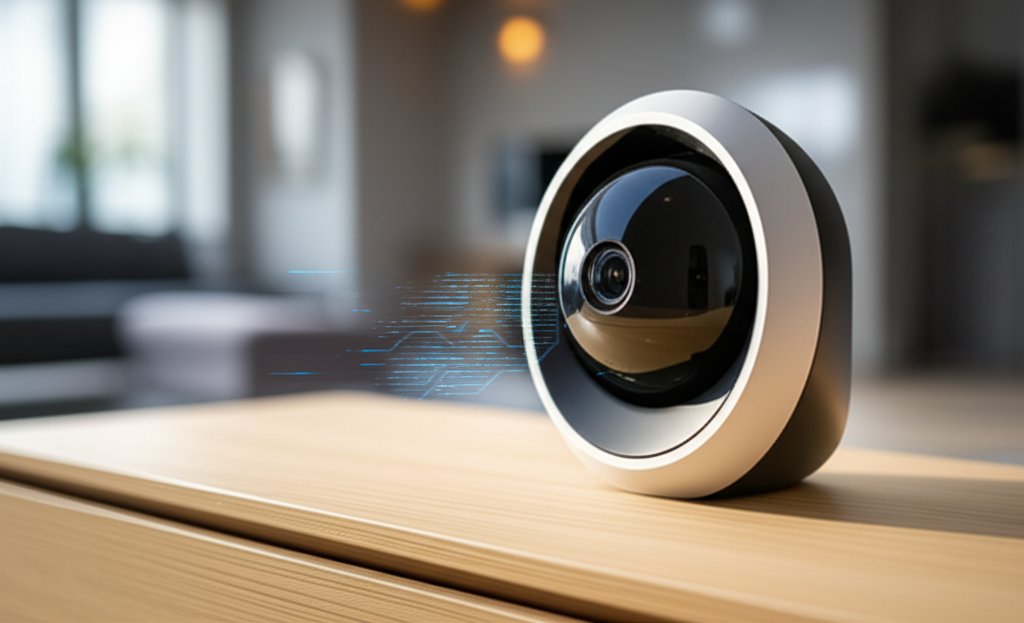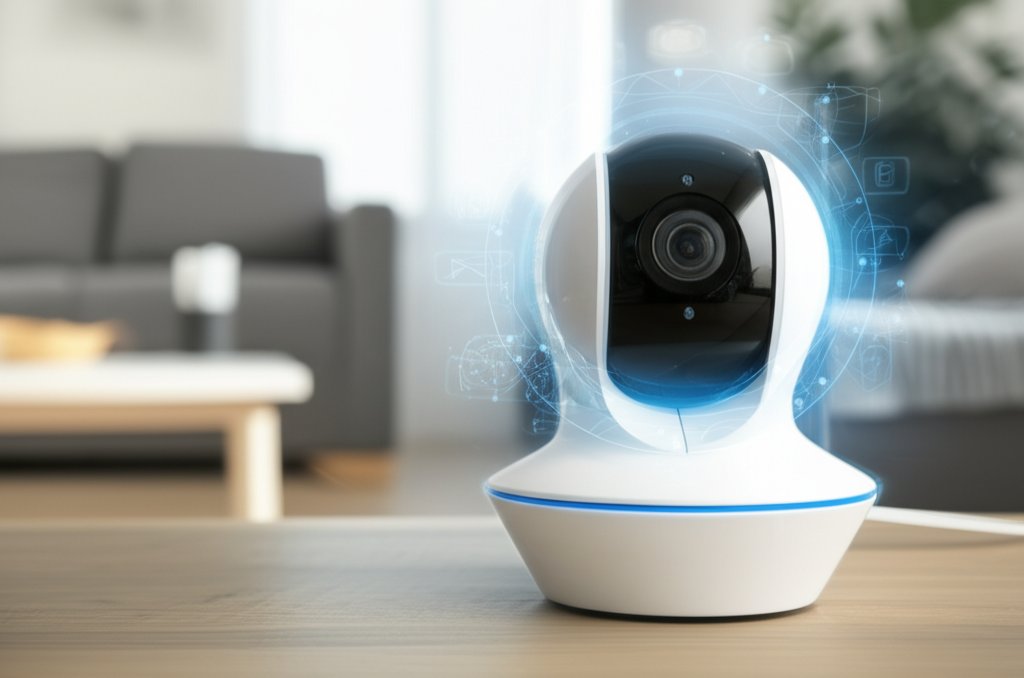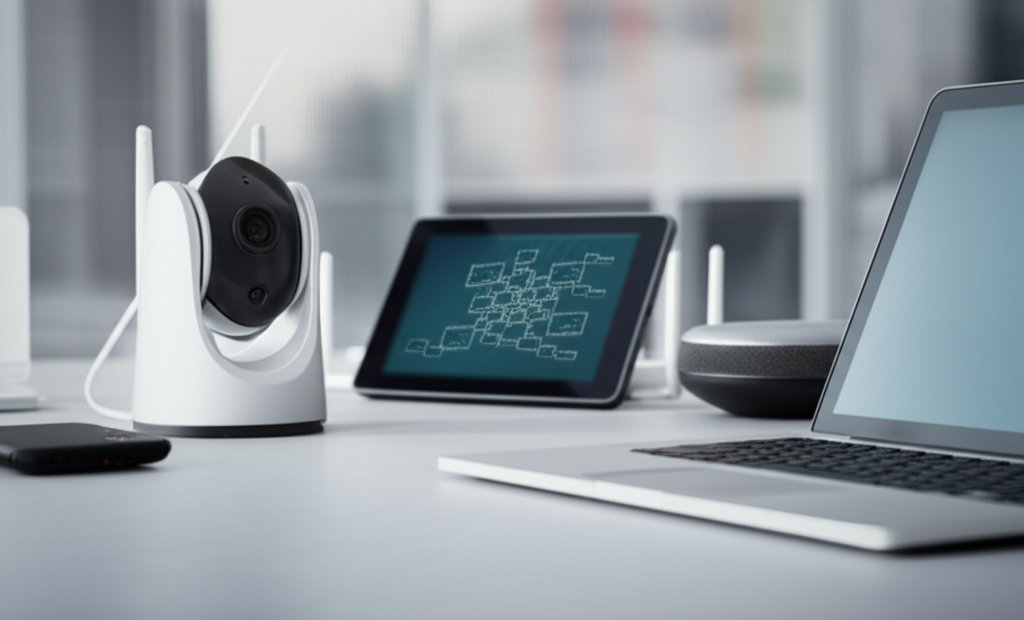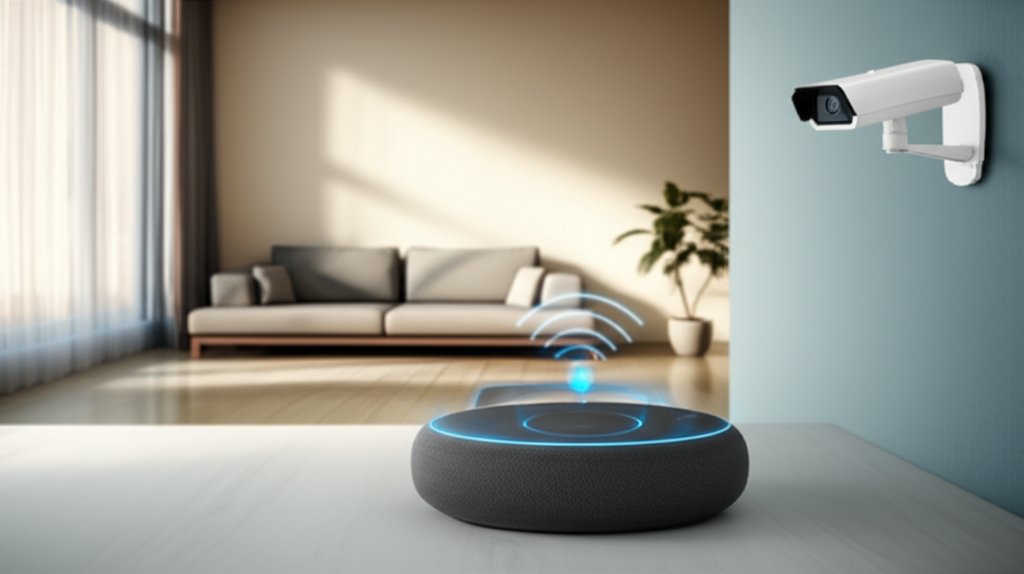Meta Description: Think APTs only target big companies? Learn how these sophisticated cyber threats can impact your smart home and discover easy, non-technical steps to protect your devices, privacy, and peace of mind.
Fortify Your Smart Home: Simple Steps to Guard Against Advanced Persistent Threats (APTs)
We’ve all come to appreciate the convenience and innovation that a smart home brings. From adjusting your thermostat with a voice command to remotely checking on your pets, these devices have woven themselves into the fabric of our daily lives. But with great convenience comes the equally great responsibility of security. While you might feel like cybersecurity threats are only for big corporations or government agencies, the reality is, your connected home isn’t entirely off the radar for even the most sophisticated attackers.
Today, we’re going to dive deep into how you can protect your smart home devices from what are known as Advanced Persistent Threats (APTs). These aren’t your everyday, opportunistic hackers; these are serious adversaries who operate with immense patience and resources. Building a truly secure smart home requires us to be proactive, and I’m here to help you understand these elevated risks and arm you with practical, non-technical strategies to stay safe. Let’s make sure your digital sanctuary remains just that: a sanctuary.
What Are Advanced Persistent Threats (APTs) and Why Should Smart Home Users Care?
Beyond the Everyday Hacker: Understanding APTs Simply
-
Definition: Forget the image of a lone hacker trying to break in and grab something quick. APTs are different. They’re prolonged, stealthy cyberattacks where an intruder gains access to a network and, crucially, remains undetected for an extended period. Think of it less like a smash-and-grab and more like a long-term, secret occupation of your digital space.
-
Who’s Behind Them? APTs are often carried out by highly skilled, well-funded groups. We’re talking nation-states, state-sponsored entities, or very organized criminal networks. These aren’t hobbyists; they’re professionals with significant resources, patience, and often specific, high-value objectives.
-
Their Goal: The primary objective of most APT attacks isn’t quick cash. It’s to achieve and maintain ongoing, undetected access to steal sensitive data, intellectual property, or disrupt operations over a very long period. They want to be inside, watching, learning, and extracting information without anyone ever realizing they’re there. For smart homes, this could mean continuous surveillance, data exfiltration, or preparing for a larger attack.
Why Your Smart Home Could Be a Target (Even Indirectly)
You might be thinking, “APTs? My smart doorbell? Surely not!” And you’re right, you’re probably not the primary target of a nation-state’s intelligence operation. But here’s why your smart home still matters:
-
Stepping Stone: Your smart home network could be used as a low-risk entry point or testing ground. Attackers might compromise a less secure smart device as a way to eventually target higher-value networks you might be connected to, like your work network if you’re working remotely. Imagine an attacker compromising your smart security camera as a stealthy way to monitor when you’re home, not to steal the camera itself, but to gather enough personal data to craft a highly convincing phishing email targeting your employer, using your daily routine as leverage. It’s a softer target that could open doors elsewhere.
-
Data Value: Even if you’re not a CEO, your smart devices collect a wealth of personal data. This includes your daily routines, voice commands, surveillance footage, and even health metrics. This information can be incredibly valuable for various malicious purposes, from identity theft to personalized phishing attacks or even physical surveillance. Consider your smart thermostat, seemingly innocuous. If compromised, it could provide a precise daily schedule of when your home is occupied, valuable intelligence for various malicious actors, not just nation-states.
-
Supply Chain Vulnerabilities: APTs don’t always target you directly. Sometimes, they go for the source. Weaknesses in device manufacturers or their software can be exploited by APTs to compromise devices before they even reach your home. This means a device could be compromised right out of the box, unbeknownst to you.
-
Robust Defense: Even if you’re not a direct target of a nation-state APT, applying these advanced defense strategies provides superior protection against a broader range of sophisticated cyber threats. It’s like putting a fortress around your home, not just a picket fence. Isn’t that what we all want for our families and our data?
Foundational Defenses: Securing Your Smart Home’s Core
These are the absolute basics, but they are incredibly powerful against even advanced threats. Think of them as the locks on your digital doors.
Strong Passwords & Unique Credentials for Every Device
-
Ditch Defaults Immediately: This is non-negotiable! Always change default usernames and passwords on new smart devices and your Wi-Fi router as soon as you set them up. Attackers know these defaults and will try them first, as they represent the easiest way in.
-
Complexity and Length: Create unique, complex passwords (at least 12 characters is a good start) using a mix of uppercase and lowercase letters, numbers, and symbols for each device and account. Avoid using easily guessable information about yourself, like birthdays or pet names.
-
Password Managers: Utilizing a reputable password manager is crucial. It helps you generate, store, and manage strong, unique passwords securely, eliminating the need for you to remember dozens of complex combinations. This non-technical tool makes robust password practices simple and effective. A strong, unique password is your first line of defense to secure your devices. Using these best practices is essential to secure your smart home against evolving threats.
Enable Two-Factor Authentication (2FA) Everywhere Possible
-
Extra Layer of Security: Think of 2FA as a bouncer for your accounts. It adds an essential layer of protection by requiring a second form of verification (like a code from your phone, a fingerprint, or a physical security key) in addition to your password. This is a powerful deterrent against APTs seeking initial access, aligning with principles of Zero Trust.
-
How it Works: Even if an attacker compromises your password through a phishing attempt or data breach, they still need that second factor to gain access. Without it, their stolen password is useless, significantly reducing the chance of a successful breach.
Keep Everything Updated: Software, Firmware, and Apps
-
Patching Vulnerabilities: Device manufacturers regularly release software and firmware updates. These aren’t just for new features; they’re often critical security patches that fix vulnerabilities and protect against newly discovered threats. APTs thrive on exploiting known weaknesses, including those that lead to zero-day vulnerabilities, so keeping updated slams those doors shut, closing off common entry points.
-
Enable Automatic Updates: Whenever this feature is available, turn on automatic updates for all your smart devices and their associated apps. It’s the easiest way to ensure you’re always running the most secure version without needing to remember to do it manually.
-
Manual Checks: Don’t rely solely on automatic updates. Periodically visit manufacturer websites to check for and manually install any pending updates, especially for devices that don’t offer automatic updates or for critical firmware updates that might require a manual installation process.
Network Fortification: Your Wi-Fi is Your First Line of Defense
Your home network is the highway for all your smart devices. Securing it is paramount.
Secure Your Router Settings
-
Change Default Router Password: Just like your smart devices, your Wi-Fi router comes with a default password. Change it immediately! Many routers have easily guessable default credentials that attackers love to try. This is your network’s master key.
-
Strong Encryption: Use the strongest available encryption protocol for your Wi-Fi network. That’s preferably WPA3, or at least WPA2. WEP and older WPA versions are significantly less secure and should be avoided entirely. Check your router’s settings and choose the highest WPA version available.
-
Rename Your Wi-Fi Network (SSID): Change the default network name (SSID) to something generic that doesn’t reveal personal information about you or your router’s model. An attacker shouldn’t be able to guess what kind of router you have just by seeing its name, as this can give them clues about potential vulnerabilities.
-
Disable Unused Features: Turn off features like Wi-Fi Protected Setup (WPS) and Universal Plug and Play (UPnP) if you don’t use them. While convenient, they can sometimes be exploited by attackers looking for an easy way in, creating unnecessary exposure.
Create a Separate Guest Network for Smart Devices (Network Segmentation)
-
Isolate IoT Devices: If your router supports it, creating a separate Wi-Fi network specifically for your smart home devices is a game-changer. Think of it as a quarantine zone for devices that might have weaker security. Connect all your smart bulbs, cameras, thermostats, etc., to this “guest” or “IoT” network.
-
Limit Lateral Movement: This “network segmentation” prevents a compromised smart device (which might have weaker security than your computer) from easily accessing your main network, where your computers, smartphones, and other sensitive data reside. If an APT manages to get into your smart light bulb network, they can’t jump directly to your laptop or your bank’s website. This creates a crucial barrier.
Consider a VPN, Especially for Remote Access
-
Encrypts Traffic: A Virtual Private Network (VPN) encrypts your internet traffic, creating a secure tunnel between your device and the internet. This makes it much harder for attackers to intercept your data, especially when it’s traveling between your home and your smart device manufacturer’s servers, or when you are accessing your devices remotely. A VPN also enhances network security, offering robust protection for your home.
-
Protects on Public Wi-Fi: Always use a VPN when accessing your smart home devices remotely, especially on public Wi-Fi networks (like at a coffee shop or airport). These networks are often unsecured and are prime hunting grounds for cybercriminals and APT reconnaissance, making your connection vulnerable.
Smart Device Savvy: Beyond the Basics
Being an educated consumer is one of your strongest defenses.
Research Before You Buy
-
Choose Reputable Brands: Invest in smart devices from trusted manufacturers known for prioritizing security, privacy, and providing regular updates. Established brands often have more resources dedicated to finding and fixing vulnerabilities, offering a more secure foundation.
-
Read Reviews: Don’t just look for features. Look for reviews that specifically mention the device’s security features, privacy policies, and any past vulnerabilities. A quick search for “[device name] security vulnerabilities” before purchase can save you a lot of headaches later by helping you avoid known weak points.
Review and Limit App Permissions
-
Understand Data Collection: Be aware of what data your smart devices and their companion apps collect. Does your smart plug really need access to your location or contacts? Probably not. Read the privacy policies, and question why a device or app needs certain permissions.
-
Disable Unnecessary Features: Turn off features like microphones or cameras if you don’t actively use them, or if their functionality isn’t essential for the device’s purpose. Minimizing data collection is key to enhancing your privacy against persistent threats, as less data collected means less data to potentially compromise.
Disable Remote Access When Not Needed
If you don’t need to control a device from outside your home, disable its remote access features. Every open port or remote connection is a potential entry point for an attacker. Minimize your attack surface – the fewer doors you leave open, the fewer opportunities there are for a breach. If you only need it occasionally, enable it when necessary and then disable it again.
Monitor for Unusual Activity
-
Check Device Logs: Many smart devices and routers offer logs or activity reports within their apps or settings. Periodically review these for anything suspicious, like unusual login times or data transfers. Persistence implies activity, and activity leaves traces. Learning to spot these is a key skill.
-
Watch for Anomalies: Look for unusual data usage, unexpected logins, or devices behaving erratically (e.g., lights turning on and off randomly, cameras rotating without command, or data usage spikes on your network). Have you noticed your smart lights turning on randomly, or a security camera feed flickering even when nothing is happening? These aren’t just glitches; they could be subtle indicators of unauthorized access, even by a stealthy APT. Trust your gut if something feels off.
Physical Security Matters Too
Cybersecurity isn’t just about software; it also involves the physical world. Ensure your smart devices are physically secure to prevent tampering or unauthorized access. For example, place smart cameras out of easy reach and consider how their placement maximizes security while respecting privacy, both yours and your neighbors’. A physically accessed device can sometimes bypass all your digital defenses, so don’t overlook this crucial layer of protection.
Staying Ahead: Continuous Vigilance
Digital security is an ongoing commitment, not a one-time task. Maintaining vigilance is how you stay truly secure.
Educate Your Household
Your smart home security is only as strong as its weakest link, and often, that link can be human. Make sure everyone in your home understands and follows smart home security best practices – from strong passwords to recognizing suspicious links. Discuss why these steps are important. It’s a team effort, and awareness is your strongest defense against social engineering.
Be Wary of Phishing and Social Engineering
APTs often use highly targeted phishing (spear-phishing) and social engineering techniques to gain initial access. These aren’t generic spam emails; they’re carefully crafted messages designed to trick specific individuals into revealing information or clicking malicious links. Always be cautious of suspicious emails, messages, or calls asking for credentials, urgent actions, or urging you to click links. Verify everything through official channels, and if something feels urgent or too good to be true, it likely is. Your skepticism is a powerful tool.
Conclusion: Enjoy Your Smart Home, Securely.
Protecting your smart home devices from sophisticated threats like Advanced Persistent Threats might sound daunting, but it doesn’t have to be. By consistently taking these practical, non-technical steps, you’re not just guarding against theoretical risks; you’re building a robust and resilient digital fortress around your home. You are empowering yourself to enjoy all the convenience your smart home offers with true peace of mind, knowing you’ve taken concrete action.
Remember, digital security is an ongoing journey, not a one-time setup. Threats evolve, and so should our defenses. So, start small and expand! Take one or two of these tips and implement them today. Then, keep learning and securing your connected life. Join our smart home community for tips and troubleshooting, and let’s secure our digital world together!









